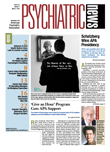Lower costs, increasing enrollment, and high enrollee satisfaction—that's the news the government is touting about the Medicare Part D prescription drug program.
Independent analyses, however, also show increasing use of a variety of forms of utilization management and tiered pricing structures, as well as enormous variation in plan design and formulary comprehensiveness.
The Centers for Medicare and Medicaid Services (CMS) is reporting that the overall projected cost of the drug benefit is $117 billion lower over the next 10 years than was estimated last summer. This is believed to be due to the slowing of drug cost increases, lower estimates of plan spending, and higher rebates from drug manufacturers, according to CMS.
Compared with original Medicare Modernization Act (MMA) projections, the net Medicare cost of the new drug benefit is $243.7 billion (or 38.5 percent) lower over the 10-year period (2004-13) used to estimate the costs of the MMA, according to CMS.
The government also reported that 1.5 million people enrolled in Part D during the third enrollment season, bringing the total number of enrollees to 25.4 million.
“As we enter the third year, Medicare's prescription drug benefit is proving a resounding success,” said Health and Human Services Secretary Mike Leavitt in a statement. “Enrollment continues to rise, customer satisfaction remains very high, and costs for beneficiaries and taxpayers are considerably lower than original projections.”
But a series of Medicare Part D “Data Spotlights” released by the Kaiser Family Foundation has found extremely wide variation in the structure of prescription drug plans, use of utilization management, and formulary comprehensiveness, so that plan choice is increasingly crucial for beneficiaries.
One data spotlight reports that utilization-management restrictions are more common in 2008 than they were in 2006, with 30 percent of sample drugs subject to some use restriction in 2008, up from 20 percent in 2006 (see chart).
The data spotlights analyze data from the 47 stand-alone prescription drug plans available nationwide using a sample of 169 commonly used and high-cost prescription drugs; the high-cost group includes 33 antidepressants, representing 24 unique chemicals.
The 2008 data for the analysis were collected from the CMS Web site using the Medicare Prescription Drug Plan Finder shortly after the plan finder became active for the new year.
Medicare Part D prescription drug plans use a variety of techniques to manage enrollees' use of prescription drugs, including prior authorization (not covering a drug until the prescriber documents that it is medically necessary), step therapy (not covering a drug until certain other drug therapies are tried first), and quantity limits (restricting the quantity of a covered drug dispensed over a certain period of time).
For 2008, Kaiser researchers found that quantity limits have been applied to 21 percent of sample drugs on average across the national prescription drug plans (PDPs), up from 12 percent in 2006, while use of step therapy has doubled from 6 percent of sample drugs in 2006 to 12 percent in 2008.
Prior authorization is applied to about 5 percent of the sample drugs on average, a rate that has stayed roughly the same since 2006, according to Kaiser.
Irvin “Sam” Muszynski, J.D., director of APA's Office o f Healthcare Systems and Financing, said the findings are in line with anecdotal information from APA members, as well as a study released last year by the American Psychiatric Institute for Research and Education (APIRE), indicating that utilization management is the most significant barrier to patients' getting appropriate medication under Medicare Part D.
“Our office is continuing to work with CMS to resolve this problem,” Muszynski told Psychiatric News. “In the meantime, it's vital that information about which drugs require prior authorization, as well as the prior authorization criteria, be readily available so that the time and effort required to obtain them can be minimized. CMS will require that Part D plans post prior authorization criteria on their Web sites next year.”
The APIRE study appeared in Psychiatric Services in January and was reported in Psychiatric News (December 21, 2007).
The Kaiser researchers found that, on average, plans are more likely to apply utilization-management tools to brand-name drugs than to generic drugs because brands tend to be more expensive, and lower-cost generic equivalents or therapeutic alternatives are often available. National PDPs apply one or more utilization-management tools to 38 percent of brand-name drugs but to only 22 percent of generics, according to the Kaiser researchers.
They also found that plans vary considerably in the extent to which they apply utilization-management tools. For example, 12 of the 47 national PDPs do not apply step therapy to any of the 169 sample drugs, while eight of the national PDPs use step therapy for over 25 percent of the sample drugs.
Similar variation across plans exists in the application of quantity limits, but none of the national PDPs is using prior authorization for more than 10 percent of the sample drugs in 2008.
Finally, it appears that utilization management is very often inversely related to formulary comprehensiveness.
A comparison of national PDPs regarding the number of unrestricted sample drugs (that is, with no utilization-management restriction applied) listed on formulary to the total number of sample drugs listed shows that for 2008, national PDPs have listed on formulary 85 percent (143 drugs) of the 169 sample drugs, on average, but only 65 percent of covered drugs (93 drugs) have no utilization-management restrictions.
The utilization-management data spotlight was prepared by researchers at Georgetown University, NORC (National Opinion Research Center) at the University of Chicago, and the Kaiser Foundation.
The data spotlights and methodology are posted at<www.kff.org/medicare/med102507pkg.cfm>. The government's Part D enrollment figures are posted at<www.cms.hhs.gov/PrescriptionDrugCovGenIn/01_Overview.asp>. The budget estimates for the Part D program were released as part of President Bush's budget, which can be accessed at<www.whitehouse.gov/omb>.▪

